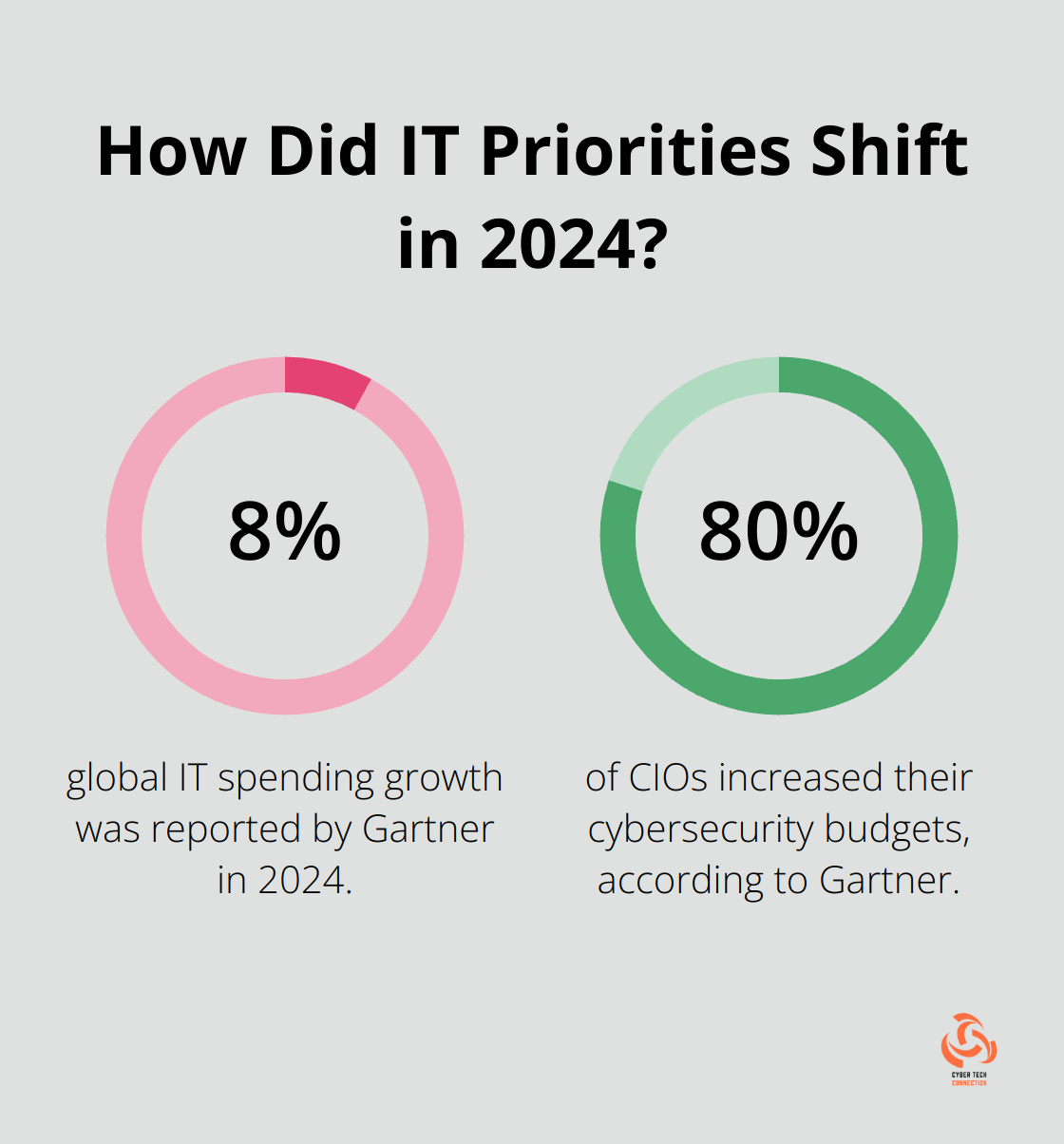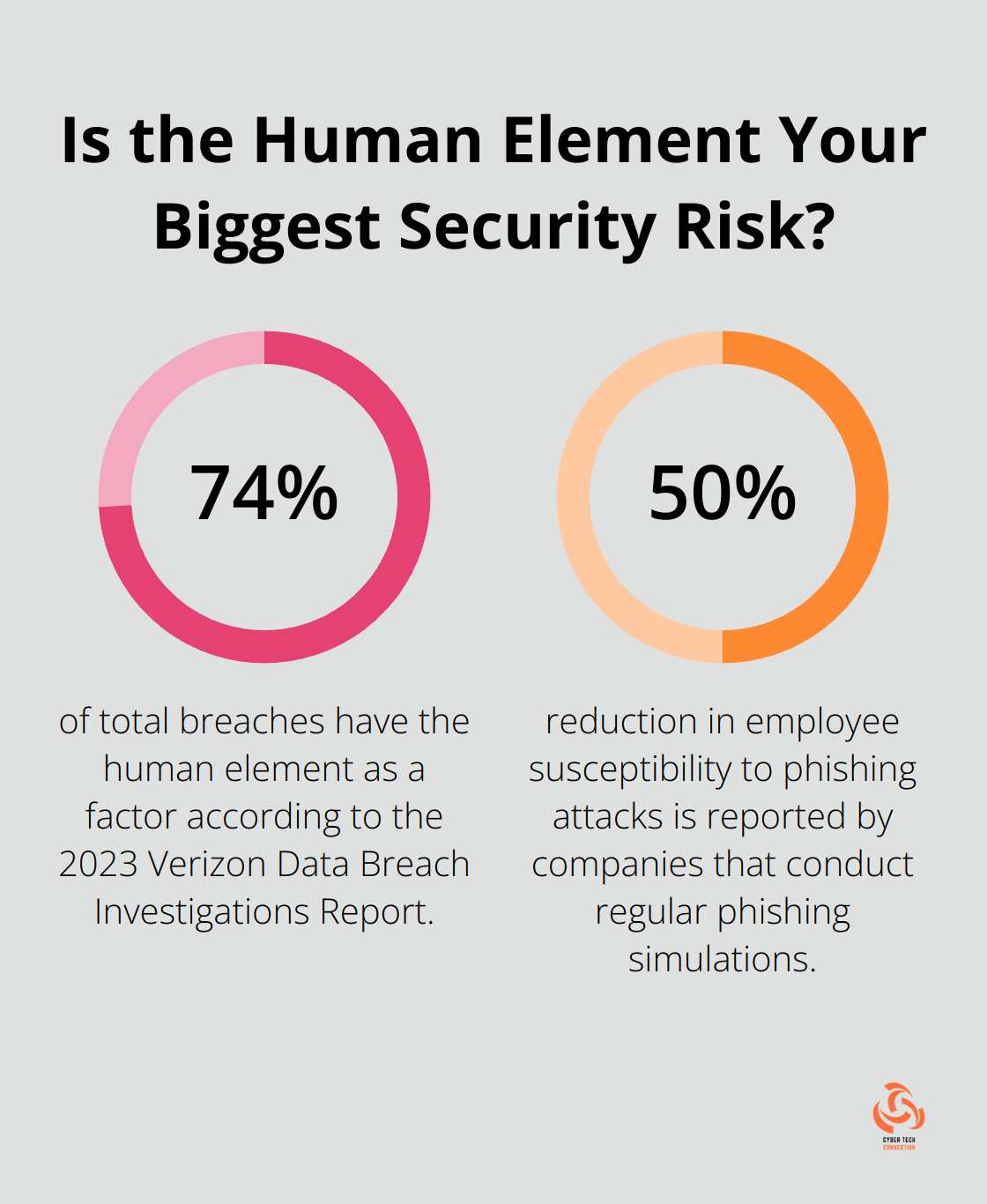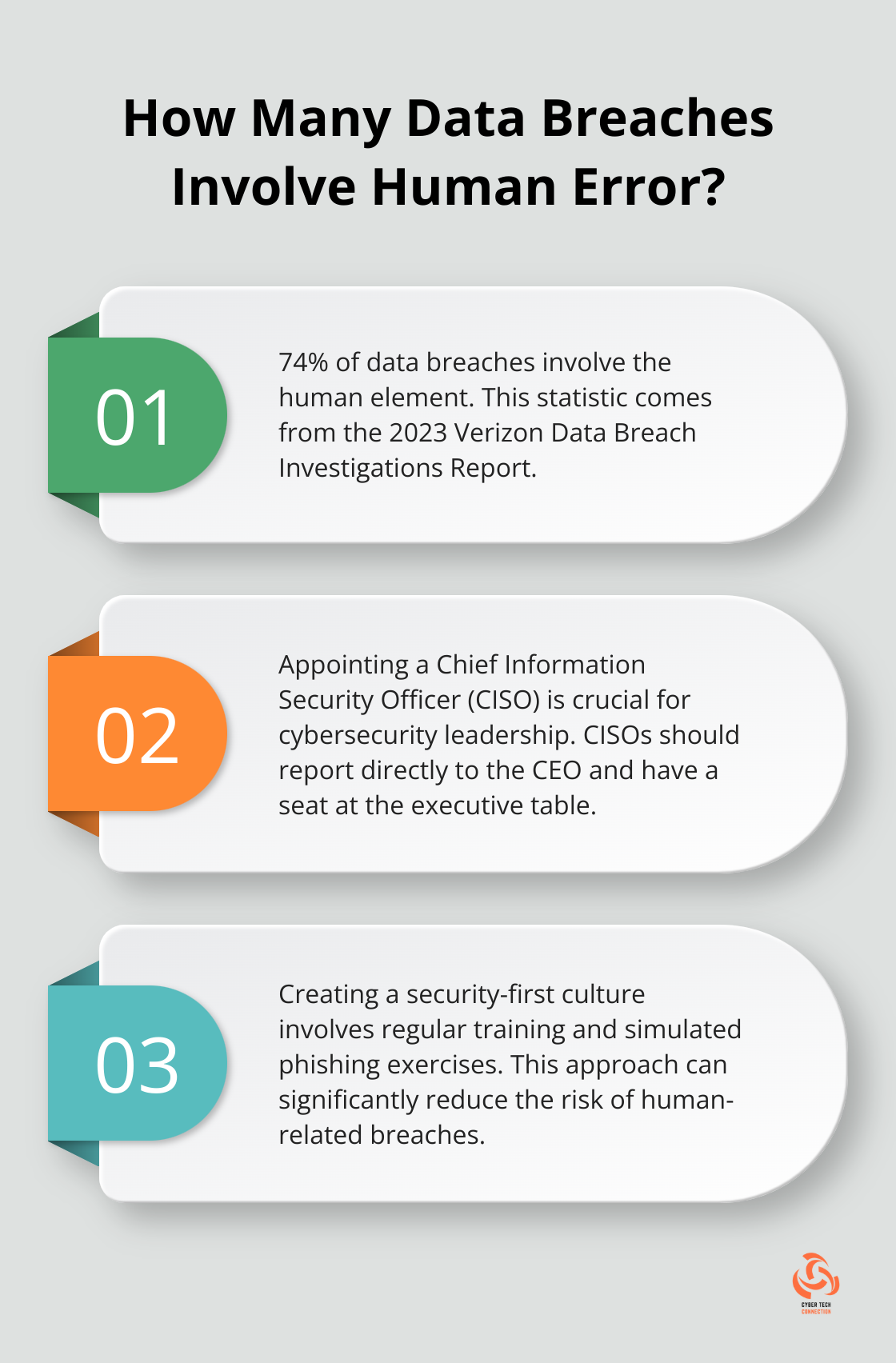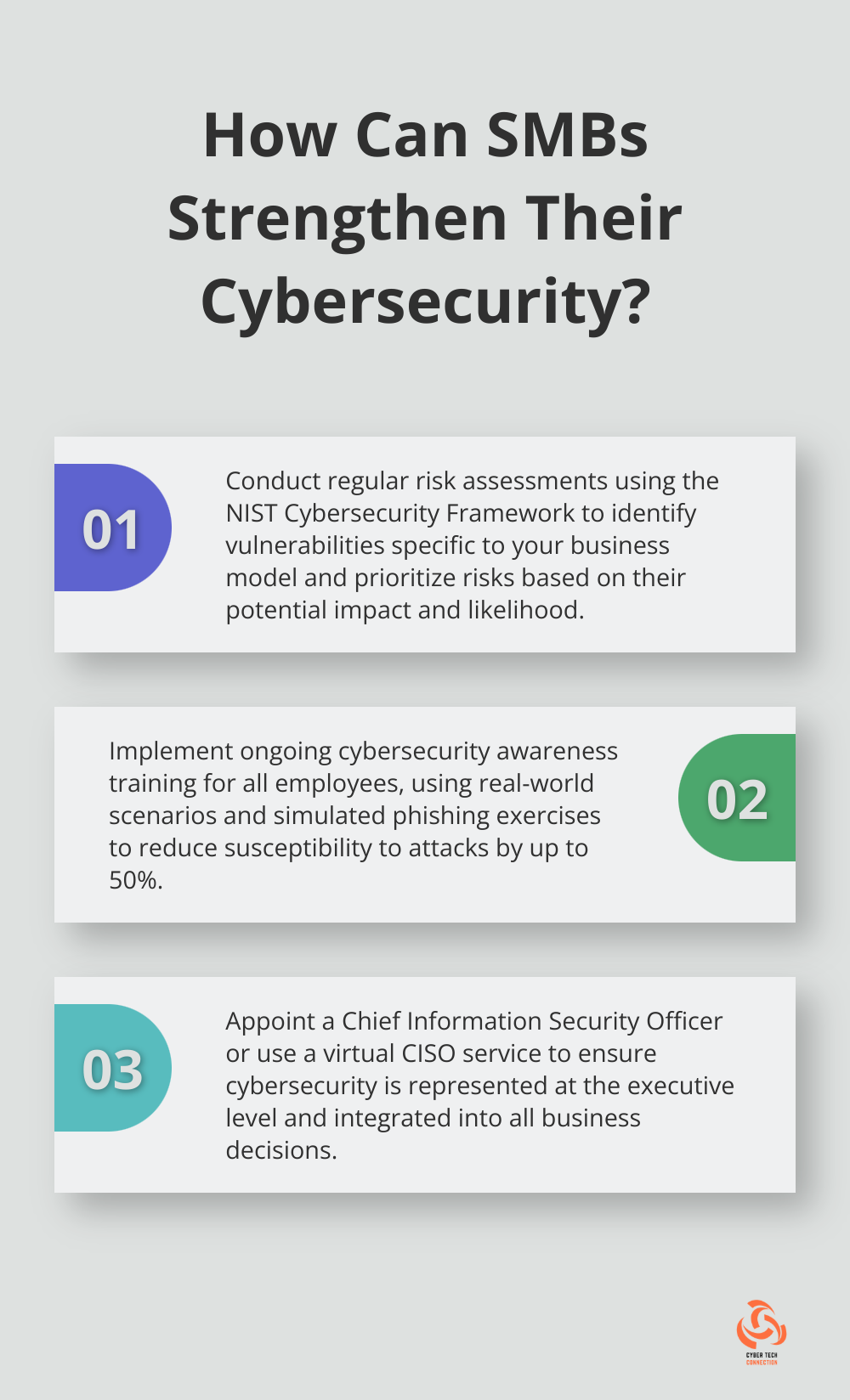Bridging Business and Cybersecurity: Best Practices
Content by: Dave Jooste from Cyber Tech Connection
The connection between business and cybersecurity has never been more critical. At Cyber Tech Connection, we’ve seen firsthand how cyber threats can disrupt operations and damage reputations.
This blog post explores best practices for bridging the gap between business objectives and cybersecurity needs. We’ll cover key strategies to protect your organization while driving growth and innovation.
Why Cybersecurity Matters for Your Business
The Rising Tide of Cyber Threats
In the past year, cyber risks have significantly increased, directly impacting businesses of all sizes. Cybercriminals now use advanced techniques like AI-powered attacks and ransomware-as-a-service. These evolving threats pose significant risks to businesses’ data, finances, and reputation. The average cost of a ransomware attack can cost up to $4 million, a figure that can cripple many organizations.
Real-World Impact on Business Operations
Cyber incidents can paralyze business operations. In 2023, a major U.S. hospital chain faced a week-long shutdown of its IT systems due to a ransomware attack. This forced them to divert patients and resort to paper records. The incident not only disrupted patient care but also resulted in millions of dollars in lost revenue and recovery costs.
Aligning Security with Business Goals
Integrating cybersecurity into your business strategy is no longer optional, it’s a necessity. According to Gartner, global IT spending grew by 8% in 2024, reaching $5.1 trillion (with 80% of CIOs increasing their cybersecurity budgets). This trend reflects the growing recognition of cybersecurity as a business enabler rather than just a cost center.

To effectively align security with business objectives, you should:
- Conduct regular risk assessments to identify vulnerabilities specific to your business model.
- Involve cybersecurity experts in strategic planning sessions to ensure security considerations are baked into new initiatives.
- Implement a zero-trust architecture to protect your assets in today’s distributed work environments.
The Role of Managed Service Providers
Many businesses turn to Managed Service Providers (MSPs) to handle their cybersecurity needs. These providers offer expertise and resources that may be difficult or costly for businesses to maintain in-house. When choosing an MSP, consider factors such as their experience, range of services, and customer support. Cyber Tech Connection, for example, offers comprehensive mobile protection services and endpoint management, among other cybersecurity solutions.
As we move forward, it’s clear that cybersecurity is not just an IT issue-it’s a business imperative. The next section will explore key cybersecurity best practices that businesses can implement to protect their assets and maintain customer trust in today’s digital landscape.
How to Implement Effective Cybersecurity Practices
Conduct Regular Risk Assessments
Identify your critical assets and potential vulnerabilities to protect your business effectively. The NIST Cybersecurity Framework provides a useful guide for your assessment process. While not mandatory, aligning with the NIST CSF can help organizations manage and mitigate cybersecurity risk.

Prioritize risks based on their potential impact and likelihood to allocate resources effectively. For instance, if you handle sensitive customer data, strengthen data encryption and access controls.
Develop Comprehensive Security Policies
Create clear, actionable security policies that cover all aspects of your business operations. Include guidelines for password management, data handling, and acceptable use of company resources.
Review and update these policies regularly to address new threats and technologies. The SANS Institute recommends reviewing security policies at least annually.
Implement Continuous Employee Training
Human error remains a leading cause of security breaches. Implement ongoing cybersecurity awareness training for all employees. The 2023 Verizon Data Breach Investigations Report states that the human element is a factor in 74% of total breaches.
Use real-world scenarios and simulated phishing exercises to make training more engaging and effective. Companies that conduct regular phishing simulations report a 50% reduction in employee susceptibility to these attacks.
Establish a Robust Incident Response Plan
Develop a detailed incident response plan that outlines steps to take in case of a security breach. Include roles and responsibilities, communication protocols, and recovery procedures.
Test and update your incident response plan regularly through tabletop exercises and simulations. The SANS Institute recommends conducting these exercises at least twice a year.
Conduct Regular Security Audits and Testing
Perform regular security audits and penetration testing to identify vulnerabilities in your systems. A study by the Ponemon Institute found that organizations conducting regular penetration tests save an average of $2.1 million per breach.
Use a combination of automated tools and manual testing to get a comprehensive view of your security posture. Consider engaging third-party experts (such as Cyber Tech Connection) for unbiased assessments.
The implementation of these practices requires commitment and resources, but the investment pays off in enhanced security and reduced risk. Cybersecurity is an ongoing process that requires constant attention and adaptation to new threats. As we move forward, it’s essential to understand how to integrate these practices into your overall business strategy for maximum effectiveness.
How to Make Cybersecurity a Business Priority
Appoint a Cybersecurity Leader
Designate a Chief Information Security Officer (CISO) or equivalent role. This person should have a seat at the executive table and report directly to the CEO.

If a full-time CISO isn’t feasible, consider a virtual CISO service. These provide expert guidance without the overhead of a full-time executive.
Embed Security in Decision-Making
Make cybersecurity a key consideration in all business decisions. Assess the potential security risks from the outset when launching new products or services. This proactive approach can prevent costly retrofits later.
For example, consider the security implications when adopting new technologies like IoT devices.
Allocate Resources Wisely
Invest in cybersecurity tools and talent. To attract and retain top talent, allocate competitive salaries and ongoing training budgets.
Don’t overlook technology investments.
Create a Security-First Culture
Foster a culture where every employee understands their role in maintaining cybersecurity. Regular training sessions, simulated phishing exercises, and clear communication about security policies can help achieve this goal.
The 2023 Verizon Data Breach Investigations Report found that 74% of breaches involved the human element. A security-aware culture can significantly reduce this risk.
Collaborate and Share Intelligence
Join industry-specific Information Sharing and Analysis Centers (ISACs) to stay informed about emerging threats. These organizations facilitate the sharing of cyber threat intelligence among members.
The Financial Services ISAC (FS-ISAC), for instance, has over 7,000 member institutions in 70 countries. Members receive real-time alerts about cyber threats, allowing them to defend proactively against emerging attacks.
Final Thoughts
The connection between business and cybersecurity is essential for survival and growth in today’s digital landscape. Organizations must implement best practices and integrate cybersecurity into their business strategy to protect assets, maintain customer trust, and drive innovation. Regular risk assessments, comprehensive security policies, and ongoing employee training form the foundation of a strong cybersecurity posture.

A dedicated cybersecurity leader can embed security in decision-making processes and foster a security-first culture. This approach creates a strong foundation for cyber resilience and allows businesses to adapt to evolving threats. Cybersecurity is an ongoing process that requires constant vigilance and adaptation to stay ahead of cybercriminals.
Cyber Tech Connection offers a range of managed services tailored to diverse business needs. Their comprehensive solutions can help strengthen your cybersecurity posture and align it with your business objectives. A strong cybersecurity strategy enables your business to thrive with confidence in the face of evolving cyber risks.

